Northamptonshire Police
| Northamptonshire Police | |
|---|---|
 | |
| Common name | Northants Police |
| Abbreviation | NPS |
| Agency overview | |
| Formed | 1 April 1966 |
| Preceding agencies |
|
| Employees | 2,147 |
| Volunteers | Approximately 700 volunteers |
| Annual budget | £121,000,000 (2014) |
| Jurisdictional structure | |
| Operations jurisdiction | Northamptonshire, UK |
.svg.png) | |
| Map of Northamptonshire Police's jurisdiction. | |
| Size | 2,364 |
| Population | 710,000 |
| Governing body | Home Office |
| General nature | • Local civilian agency |
| Operational structure | |
| Overviewed by | Her Majesty’s Inspectorate for Constabulary (HMIC) |
| Headquarters | Wootton Hall, Northampton, United Kingdom NN4 0JQ |
|
| |
| Police Officers |
1649 (2014)[1]
|
| Unsworn members |
908 (2014)[1]
|
| Elected officers responsible |
|
| Agency executives |
|
| Parent agency | Office of the Police and Crime Commissioner for Northamptonshire |
| Child agency |
|
| Facilities | |
| Stations | |
| Website | |
| www.northants.police.uk | |
Northamptonshire Police (colloquially known as Northants Police) is a territorial police force responsible for policing the county of Northamptonshire in the East Midlands of England, in the United Kingdom.
The Force provides municipal police services 24-hours-a-day, seven days a week to 16 town settlements (Brackley, Burton Latimer, Corby, Daventry, Desborough, Higham Ferrers, Irthlingborough, Kettering, Northampton, Oundle, Raunds, Rothwell, Rushden, Towcester, Thrapston and Wellingborough) across 914 square miles (2,370 km2) and has a resident population of 710,000. It responds to more than one million phone calls a year, with more than 120,000 of these being 999 or 112 calls requesting immediate police attention.
As a municipal police force within the United Kingdom (legally known as a territorial police force), Northamptonshire Police is responsible for general law and order within the county, including the enforcement of the laws of Parliament, in addition to county and municipal laws.
History
Prior to the establishment of uniformed police forces in the United Kingdom, each parish had a Parish Constable – a person appointed locally who had responsibility for enforcing the law within their own village. In villages and towns, a system known as Watch and Ward was employed, where paid Watchmen guarded towns at night.
Northamptonshire Police can trace its earliest roots to 1840 when the Northamptonshire Constabulary and Daventry Constabulary were formed. The establishment of police forces at that time was based upon principles established by Sir Robert Peel, the Home Secretary in 1822 and founder of modern-day policing in most Westminster-based systems of government. Known as the Peelian Principles, they describe a philosophy that define an ethical police force and include:
- Every police officer should be issued an identification number, to assure accountability for his actions.
- Whether the police are effective is not measured on the number of arrests, but on the lack of crime.
- Above all else, an effective authority figure knows trust and accountability are paramount. Hence, Peel's most often quoted principle that "The police are the public and the public are the police”.
Upon creation, Northamptonshire Constabulary initially started with seven superintendents and 35 police constables, who worked in a primitive shift system and were paid 12 shillings a week.
In 1930, Northamptonshire Constabulary rolled-out their first motorised vehicles for law enforcement use. The inventory included two cars and four motorcycles for police officer use. The vehicles were stationed throughout the county, with one car based in Daventry and the other in Kettering. The motorcycles were stationed in Northampton, Wellingborough, Oundel and Towcester.
The Northamptonshire Constabulary merged with the borough police forces within Northamptonshire on 1 April 1966 to form Northampton and County Constabulary with an estimated 442 officers and actual strength of 387.[2]
The Force was renamed the Northamptonshire Police on 1 January 1975.
Northamptonshire Police and Crime Commissioner
The Northamptonshire Police and Crime Commissioner (PCC) is an elected official charged with securing efficient and effective policing within the County. The position replaces the now abolished police authorities. The PCC is elected for four-year terms. The first incumbents were elected on 15 November 2012.
The current PCC is Mr. Stephen Mold who was elected to office on 5 May 2016 to a term expiring in May 2020.
The core functions of the PCC is to secure the maintenance of an efficient and effective police force within Northamptonshire, and to hold the Chief Constable to account for the delivery of the police and crime plan. The PCC is also charged with holding the police fund (from which all policing in the County is financed) and raising the local policing precept from council tax. Lastly, the PCC is responsible for the appointment, suspension and dismissal of the Chief Constable.
Police and Crime Plan
Shortly after their election to office, the PCC is required to produce a Police and Crime Plan. The plan must include their objectives for policing, what resources will be provided to the Chief Constable and how performance will be measured. Both the PCC and the Chief Constable must have regard to the Police and Crime Plan in the exercise of their duties. The PCC is required to produce an annual report to the public on progress in policing. The Police and Crime Plan 2014-2017 is Northamptonshire Police’s foundation document.
Police funding
The PCC is charged with managing the 'police fund', from which all policing is financed. The bulk of funding for the police fund comes from the Home Office in the form of an annual grant (calculated on a proportionate basis by the Home Office to take into account the differences between the 43 forces in England and Wales, which vary significantly in terms of population, geographical size, crime levels and trends), though the PCC has the authority to set a precept on the Council Tax to raise additional funds. The PCC is responsible for setting the budget for the Force, which includes allocating enough money from the overall policing budget to ensure that they can discharge their own functions effectively.
Organisation
Police officers and staff operate from the Police Headquarters at Wootton Hall and at police stations based in Brackley, Corby, Daventry, Kettering, Oundle, Northampton, Rushden and Wellingborough.
The Force is led by the Chief Constable, and is composed of:
- The Chief Officers and Force Command Team;
- Crime and Justice Command;
- Force Support Departments;
- East Midlands Police Collaboration; and,
- Multi-Force Shared Services.
Chief Constable
The Chief Constable (sometimes referred to in legislation as the Chief Police Officer) is the most senior constable within Northamptonshire Police and holds command of the Force. They are accountable to the Police and Crime Commissioner of Northamptonshire who appoints them, and who may dismiss them.
The Chief Constable is assisted by a Deputy Chief Constable (DCC) and one or more Assistant Chief Constables (ACC) whom are collectively known as the "Chief Officers" of the force and belong to the Association of Chief Police Officers (ACPO).
The current Chief Constable of Northamptonshire Police is Nick Adderley who was appointed in July 2015 to a four year term. The Deputy Chief Constable of Northamptonshire Police is Rachel Swann, who was appointed in June 2017
Chief Constables have been:
- 1840–1849 : Henry Goddard (first Chief Constable of Northants)
- 1849–1875 : Henry Lambert Bailey [3]
- 1875–1881 : ??
- 1881–1931 : James Kellie-MacCallum
- 1931–1941 : Angus Ferguson
- 1941–1960 : Captain Robert Henry Dundas Bolton
- 1960–1972 : John Aidan Hastings Gott
- 1972–??: Frederick Arthur Cutting [4]
- 1986–1993 : David O'Dowd
- 1993–1996 : Sir Edward Crewe (afterwards Chief Constable of the West Midlands,1996}
- 1996–2003 : (Sir) Christopher Fox
- 2003–2009 : Peter Maddison
- 2009–2015 : Adrian Lee
- 2015–2018 : Simon Edens
- 2018– : Nick Adderley [5]
Chief Officers and Force Command Team
The Force Command Team consists of the Chief Constable, the Deputy Chief Constable, the Assistant Chief Constable(s) and the Assistant Chief Officer(s).
The Command Team is the executive decision making body for the Force, and supported by the Senior Management Team, is responsible for:
- the successful delivery of Force operations;
- developing a strategic vision for the Force;
- shaping the organisational development of the Force to ensure that is fit for the future; and,
- setting clear corporate priorities and the development of strategy to deliver these priorities.
Personnel
Northamptonshire Police employs more than 1220 police officers, 130 PCSO's and 700 police staff. It is also supported by more than 400 Special Constables, 700 Police Volunteers and 100 Police Cadets.
Actual personnel strength by ranks (2014/15):
- Chief Constable: 1
- Deputy Chief Constable: 1
- Assistant Chief Constable: 1
- Chief Superintendent: 2
- Superintendent: 8
- Chief Inspector: 20
- Inspector: 57
- Sergeants: 217
- Constables: 931
- Police Community Support Officers: 134
- Special Constables (all ranks): 600
- Police Staff: 774
Total 2746
Regular members
The term regular member, or "Regular", refers to the more than 1220 regular police constables who are trained, attested and paid officers of the Force, and include all the ranks from Constable to Chief Constable. They are responsible for investigating crime, and have the authority to make arrests. Regulars are responsible for general policing duties and serve in a variety of operational and administrative roles within the Force, including: major crime investigations, emergency response, forensic identification, forensic collision reconstruction, bike patrol, explosives disposal and police dog services. Also included are administrative roles including corporate services (finance, HR, etc.), policy analysis, public affairs and professional standards.
In law, every member of a police force is a Constable whatever their actual rank, in the sense that, despite being a low-ranking or high-ranking officer, all have the same powers of arrest. The basic police powers of arrest and search of an ordinary Constable are identical to those of a superintendent or chief constable; however certain higher ranks are given administrative powers to authorise certain police actions. In England and Wales, these include the powers to:
- authorise the continued detention of up to 24 hours of a person arrested for an offence and brought to a police station (granted to sergeants and above at designated police stations),
- authorise section 18 (1) PACE house searches (granted to inspectors and above), or
- extend the length of prisoner detention to 36 hours (granted to Superintendents).
Some authorities are matters of force or national or force policy and not subject to law, such as authorising the use of spike strips, and authorising the use of safe controlled crashes of pursued vehicles, by trained traffic police officers.
In relation to police officers of the Home Office or territorial police forces of England and Wales, section 30 of the Police Act 1996 states that "a member of a police force shall have all the powers and privileges of a Constable throughout England and Wales and the adjacent United Kingdom waters". Police officers do not need to be on duty to exercise their powers and can act off duty if circumstances require it (technically placing themselves back on duty). Officers from the police forces of Scotland and Northern Ireland and non-territorial special police forces have different jurisdictions.
Officers holding ranks up to and including Chief Superintendent who are members of the Criminal Investigation Department (CID) or Special Branch (and certain other units) have the prefix "Detective" before their rank. Due to the nature of their duties, these officers generally wear plain clothes and so do not wear the corresponding rank insignia; however, they still operate within the same structure as their uniformed counterparts.
Regular member ranks
Like most of the police forces of the United Kingdom, Northamptonshire Police uses a standardised set of ranks that were chosen by Home Secretary Sir Robert Peel in 1829. The ranks at that time were deliberately chosen so that they did not correspond with military ranking (with the exception of Sergeant), due to fears of a paramilitary force. Northamptonshire Police have a number of Chief Inspectors and Detective Chief Inspectors as well as two Chief Superintendents, CS Mick Stamper and DCS Kate Meynall.
| Rank | Police Constable | Sergeant | Inspector | Chief Inspector | Superintendent | Chief Superintendent |
|---|---|---|---|---|---|---|
| Insignia |  |  | 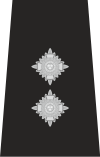 | 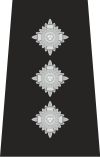 |  | 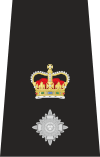 |
| Rank | Assistant Chief Constable | Deputy Chief Constable | Chief Constable |
|---|---|---|---|
| Insignia | 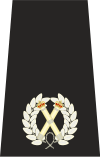 | 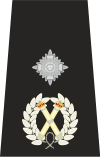 | 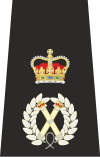 |
Special Constables
Special Constables are volunteer police officers who have exactly the same powers as a regular officer, and (with minor exceptions) wear the same uniform and are issued the same equipment. Special Constables are assigned to Safer Community Teams (SCTs) and work alongside Police Officers and Police Community Support Officers (PCSOs), to tackle crime and anti-social behaviour, and help improve public confidence and satisfaction. In addition, Specials support operations across the Force, carry out plain-clothed patrols, gather intelligence and execute warrants.
Northamptonshire Police has over 400 Special Constables, the highest number per capita in the United Kingdom of any police force, and is currently working to increase its on-board strength to over 900 Specials by 2016.
Special Constable ranks
Since 2000, the National Policing Improvement Agency has encouraged special constabularies to return to rank structures and epaulette insignia identical to their regular counterparts. In 2018 Northants Police aligned rank insignia to that of the regular counter parts:
| Rank | Special Constable | Special Sergeant | Special Inspector | Chief Officer of the Special Constabulary |
| Northamptonshire Special Constabulary | 3000
Collar Number |
Sgt Stripes and
3000 number |
Pips and
3000 number |
Same as ACC |
Emergency Services Cadets
The Northamptonshire Emergency Services Cadets deliver a combined Emergency Services curriculum allowing young people to develop skills across their Emergency Services as well as important social and life skills. Cadets are fast becoming an important part of the policing, fire and ambulance family, offering a key link to the younger members of the community. Their cadet scheme is open to all young people aged 13-18 and represent their local communities, fully embracing the rich diversity they offer. NESC are a registered charity supported by Northamptonshire Police, Northamptonshire Fire and Rescue and East Midlands Ambulance Service. The Programme operates from the following areas:
- Daventry
- Kettering
- Corby
- Northampton
- Towcester and South Northamptonshire
- Wellingborough and East Northamptonshire
NESC support all the Emergency Services with operational policing and community engagement. The Programme is open to all young people regardless of their career ambitions or capabilities. It is intended that participants in the programme will develop skills and confidence that will be of benefit to communities and employers.
Police Community Support Officers
A Police Community Support Officer (PCSO) is a uniformed civilian member of police support staff. They are non-warranted but are provided a variety of Police powers. PCSO's work within Safer Community Teams composed of PCSO's, regular Officers and Special Constables to undertake high visibility patrolling, tackling anti-social behaviour, dealing with minor offences, gathering criminal intelligence and supporting front-line policing. However, the powers of PCSOs have been statutorily limited to maintain the distinction between them and Police Officers.
Police Community Support Officers do not have a rank system. Their epaulettes simply bear the words "POLICE COMMUNITY SUPPORT OFFICER" and their collar number.
Alumni
- "Whispering" Bob Harris OBE, presenter on Radio 2, and former presenter of The Old Grey Whistle Test
See also
References
- 1 2 "Police workforce, England and Wales, 31 March 2014". Home Office. 17 July 2014. Retrieved 2 May 2015.
- ↑ The Thin Blue Line, Police Council for Great Britain Staff Side Claim for Undermanning Supplements, 1965
- ↑ Clarke, John. Victorian Brackley.
- ↑ "'We have much to be proud of' says police chief as Northamptonshire marks 50th anniversary". Northamptonshire Telegraph. Retrieved 20 June 2018.
- ↑ https://www.northantspcc.org.uk/nick-adderley-confirmed-as-new-chief-constable-of-northamptonshire-police/. Missing or empty
|title=(help)